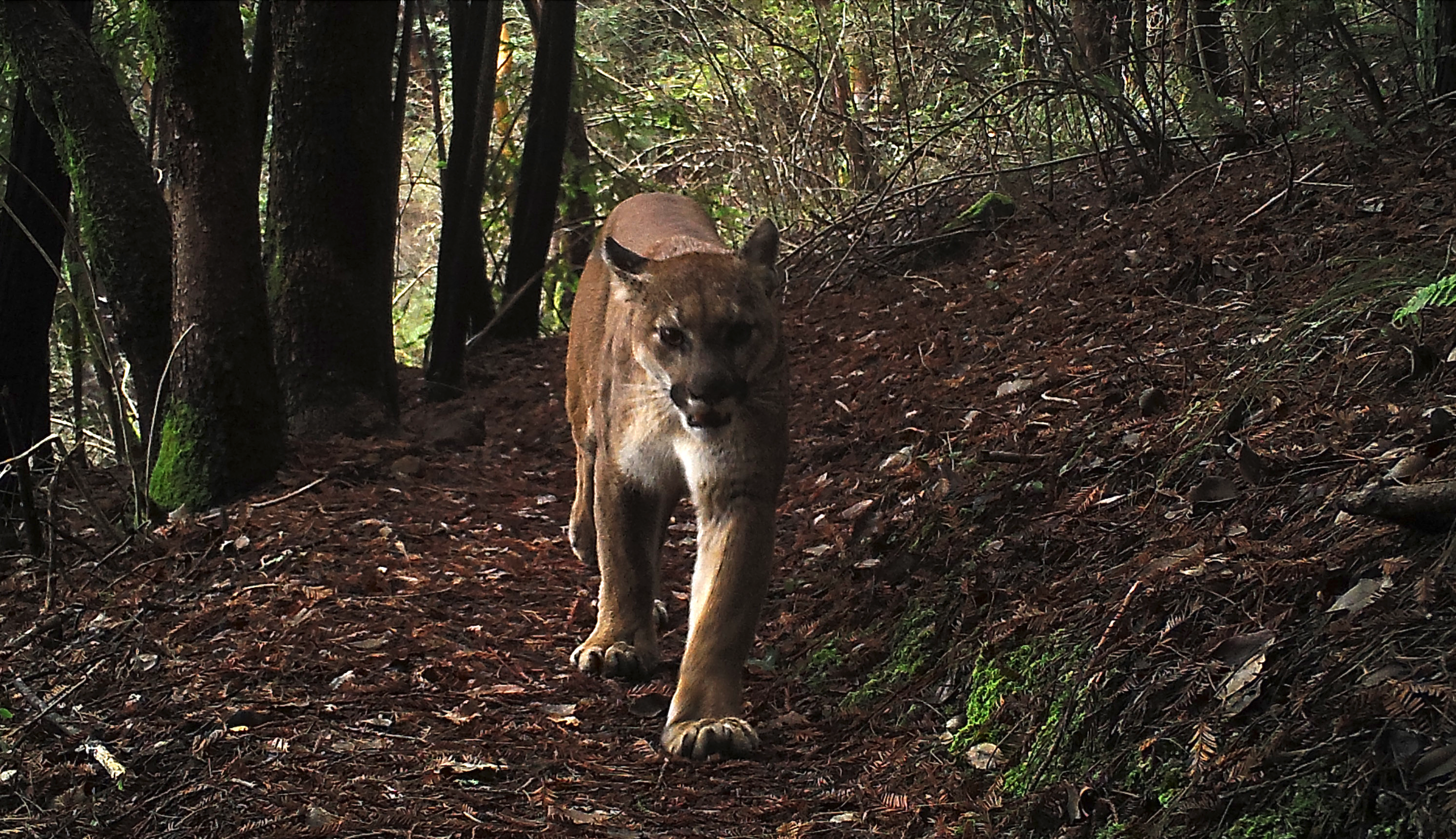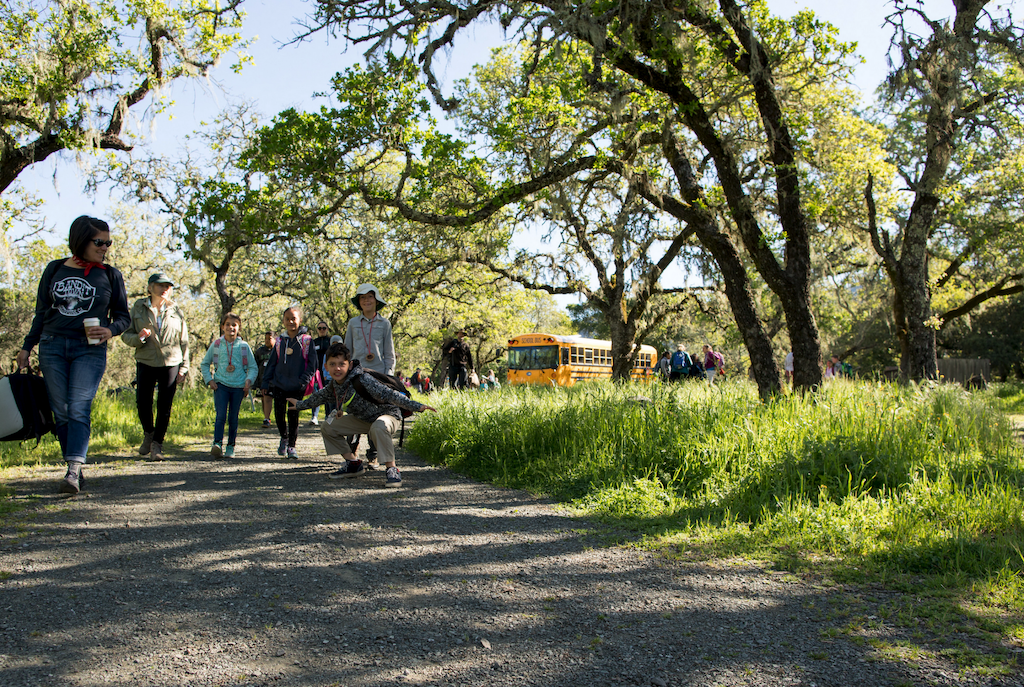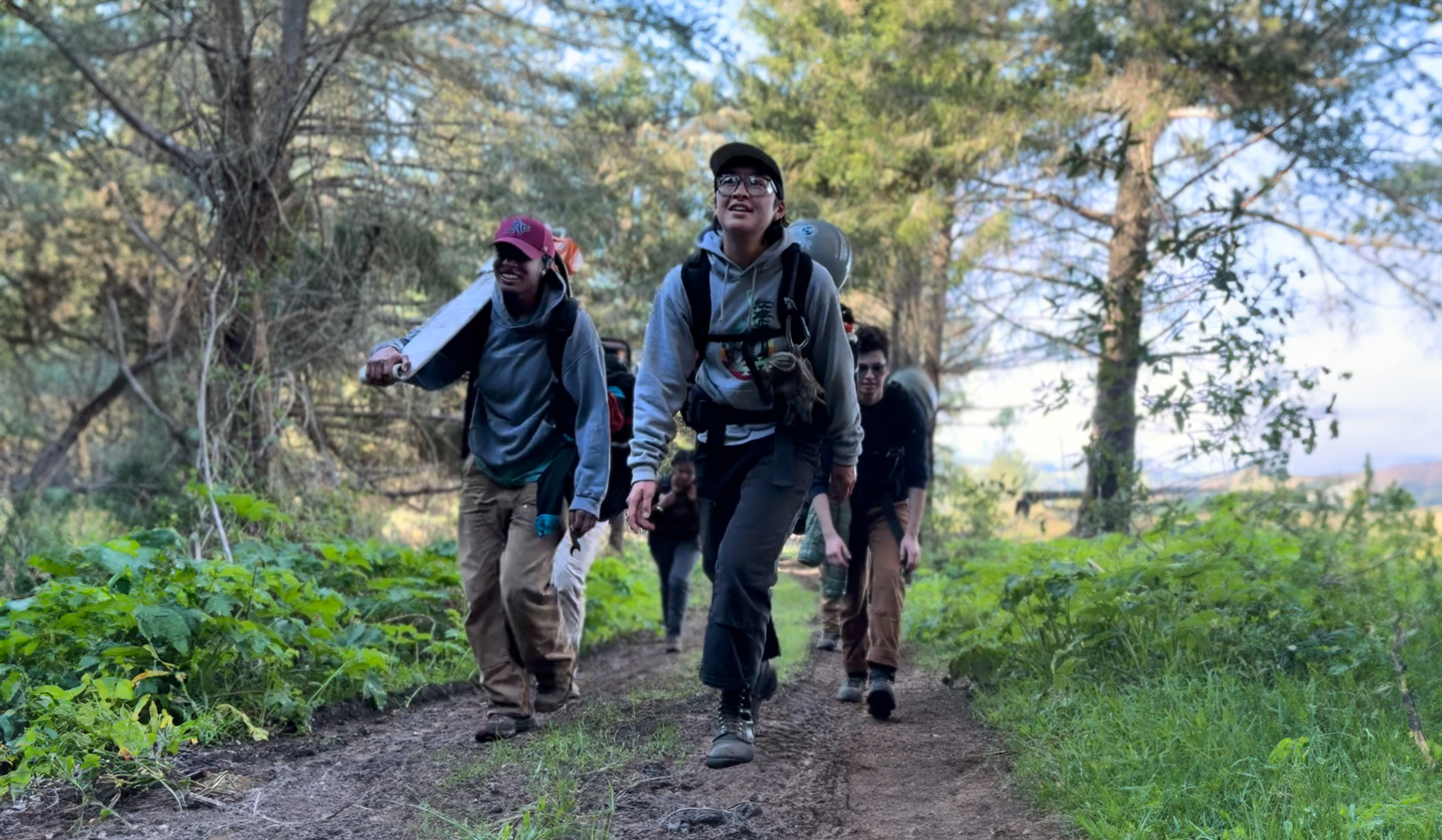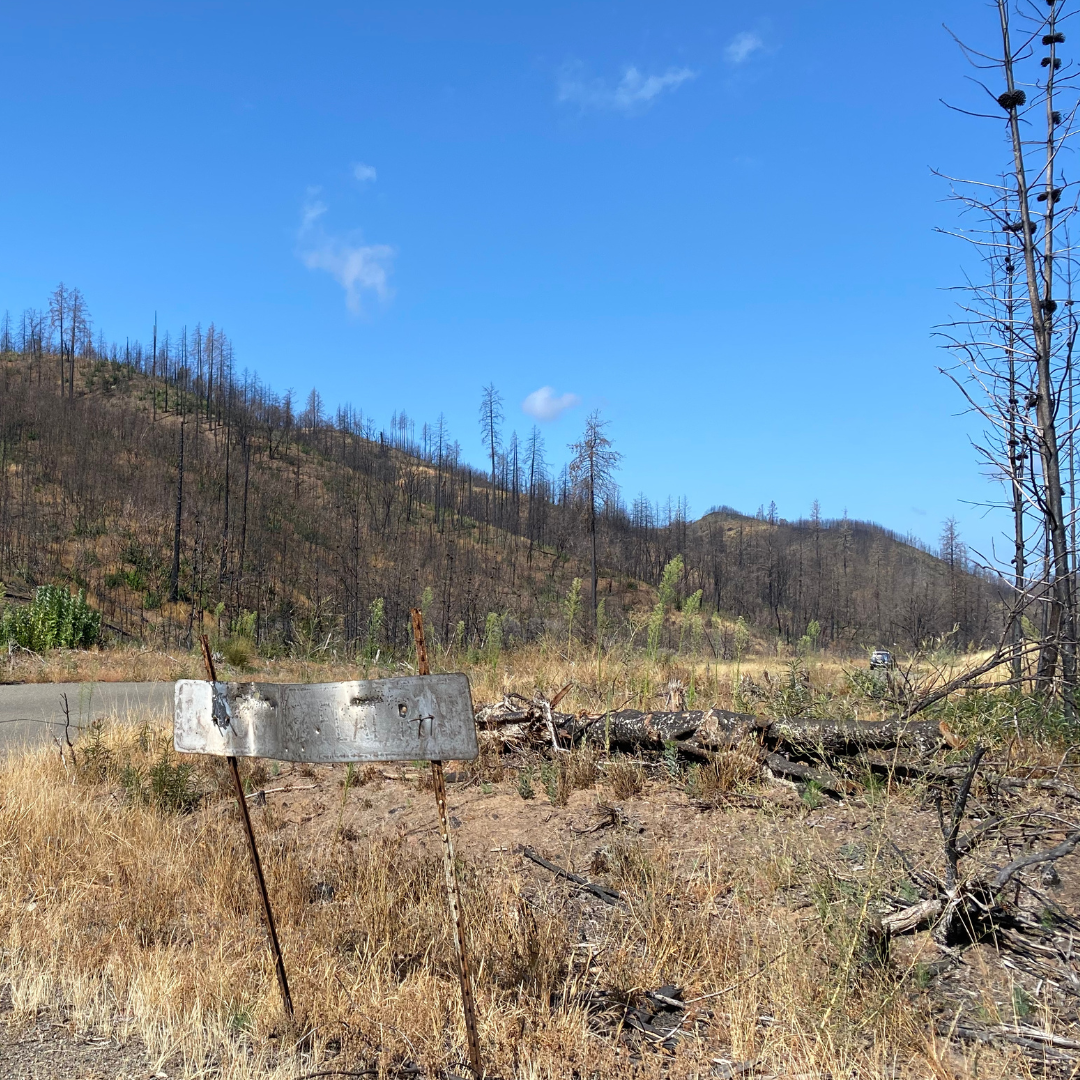|
Getting your Trinity Audio player ready...
|
Young male mountain lion’s harrowing journey comes to an end
P36 gave us a window into the precarious life of a male mountain lion attempting to stake out his own territory in a complex, human-dominated landscape in Northern California. At times, it seemed like he had settled into a new area, only to leave again and cross highways where the likelihood of being killed by a car was high. We reported on his harrowing journey earlier this year, documenting his first view of the ocean, a swim across the Russian River, and a foray to the Golden Gate Bridge.
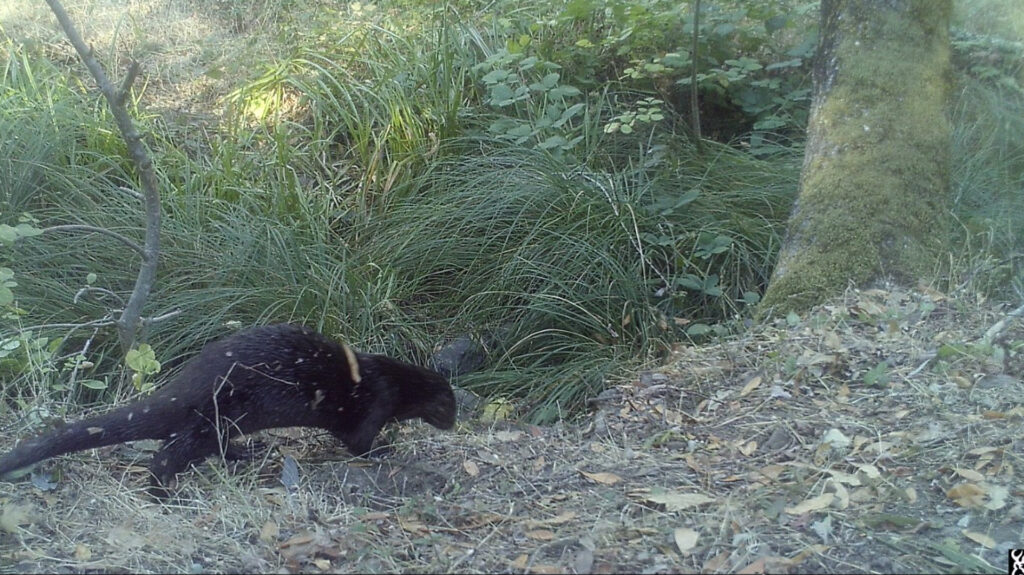
A shift in diet could indicate injury
We’ve been tracking P36’s diet since he was initially collared in March 2022. He fed almost entirely on black-tailed deer, while also adding new species to our ongoing mountain lion diet study, such as otter and badgers. P36 focused on deer despite having to avoid territorial lions and moving through a landscape where unprotected livestock were an easier and more available food source.
During P36’s short life, we tracked his movements and his diet. He walked 1,421 miles over the 17-month period, covering Sonoma, Napa, Lake, and Marin counties. We were able to monitor his diet by retroactively visiting GPS location clusters that represented feeding sites. We found he fed almost entirely on black-tailed deer, while also adding new species to our ongoing mountain lion diet study. Of the 86 kill clusters investigated, True Wild researchers detected 50 deer, 6 young wild boars, 2 badgers, and 1 otter.
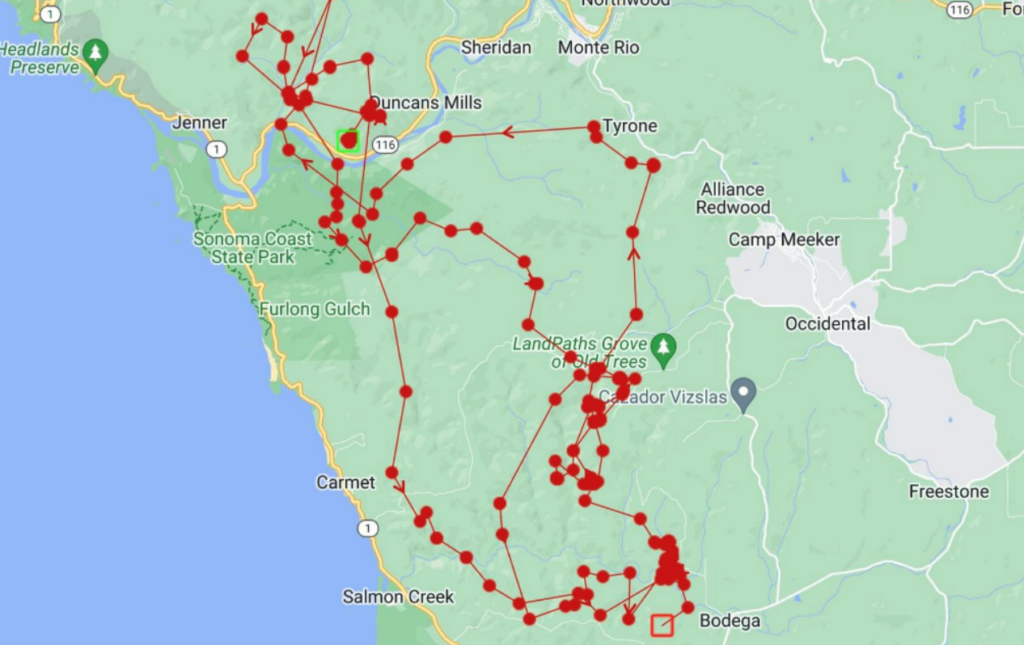
However, P36’s diet shifted in July 2023. We began to see behavioral changes — fewer kills and his first lethal encounters with livestock when he killed five sheep on a communal ranch near Bodega. The five sheep were the last prey identified at a kill site before he was shot in early August by a landowner on a nearby ranch, apparently also because of a livestock animal killed. He was estimated to be about 3 years old.” California Department of Fish and Wildlife is conducting a detailed necropsy on P36 to see if there were any health issues or injuries that led to this sudden change in diet — a phenomenon we have documented among other collared lions.
Complex ecosystem for North Bay wildlife
“Understanding the dynamics of mountain lions in the North Bay is quite complex,” reports Quinton Martins of True Wild, who is the principal investigator for Living with Lions. “Sometimes, for example, populations of these solitary cats will overlap significantly with each other on a seasonal basis, even going as far as sharing kills with several different unrelated individuals. This has been documented in areas like the High Sierra, which have extreme climatic variation. I expect that the lack of continuity in the landscape for dispersal between the North and the South Bay could lead to unusual overlap between individuals in the area where the blockage occurs and could be an interesting future study.”
A state-wide population estimate for mountain lions puts the approximate number of these big cats living in Sonoma County at around 75 cats. While we are still learning about their ability to thrive in a fragmented semi-rural landscape, we do know that their movements overlap with tens of thousands of private properties many of which have unsecured or inadequately secured farm animals residing on them. The consequence of this overlap and potential conflict leads to both the farm animals and the lions losing their lives because of it.
Since October 2016, thirty-one mountain lions have had GPS satellite tracking collars placed on them for research purposes. Many of the collars have failed, losing track of some of these cats while still obtaining trail-camera data on others. Of the 31 collared animals, 15 are known to have died — eight of these in depredation cases where livestock were killed, six due to health reasons and one being struck by a vehicle on Highway 101.
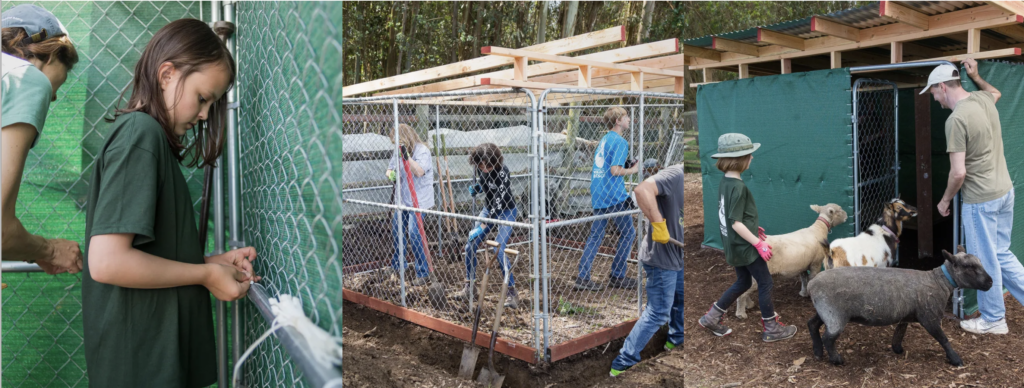
Help raise awareness about how to coexist with mountain lions
A balanced ecosystem means an ecosystem with a healthy mountain lion population. By raising awareness about mountain lions and providing tips for co-existence, you’re helping protect our community’s vital natural systems — which include lions.
Here are three ways you can help the health of mountain lions.
- Learn more about mountain lions in the North Bay and how to protect livestock, pets, and people along with other helpful resources, in our brochure “Coexisting with mountain lions: A guide for pet and livestock owners of the North Bay.”
- Watch this instructional video on building a predator-proof pen for backyard farm animals.
- Support ongoing research of our region’s big cats with your donation.
Funding for outreach, education, and research to conserve North Bay mountain lions is provided by a generous grant from the Disney Conservation Fund and individual support from Audubon Canyon Ranch members and supporters.
